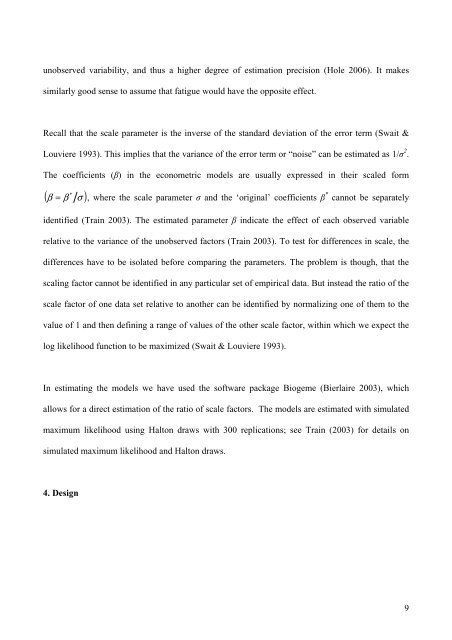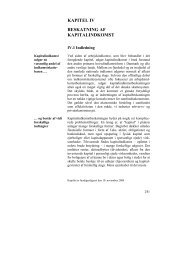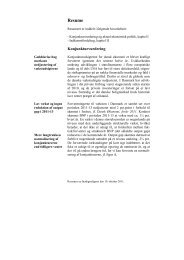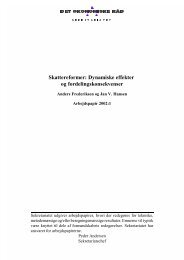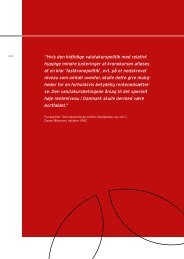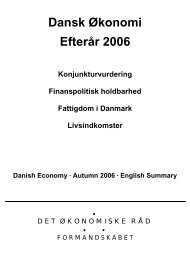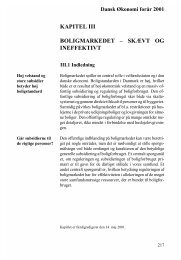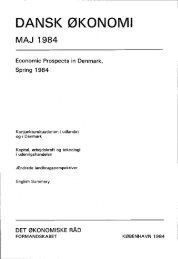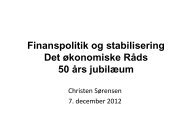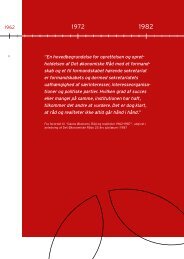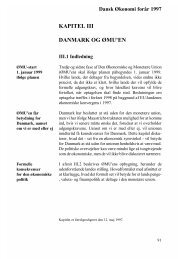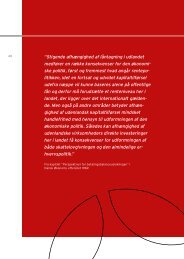The Effect of Learning and Fatigue on Preferences and WTP in a ...
The Effect of Learning and Fatigue on Preferences and WTP in a ...
The Effect of Learning and Fatigue on Preferences and WTP in a ...
Create successful ePaper yourself
Turn your PDF publications into a flip-book with our unique Google optimized e-Paper software.
unobserved variability, <str<strong>on</strong>g>and</str<strong>on</strong>g> thus a higher degree <str<strong>on</strong>g>of</str<strong>on</strong>g> estimati<strong>on</strong> precisi<strong>on</strong> (Hole 2006). It makes<br />
similarly good sense to assume that fatigue would have the opposite effect.<br />
Recall that the scale parameter is the <strong>in</strong>verse <str<strong>on</strong>g>of</str<strong>on</strong>g> the st<str<strong>on</strong>g>and</str<strong>on</strong>g>ard deviati<strong>on</strong> <str<strong>on</strong>g>of</str<strong>on</strong>g> the error term (Swait &<br />
Louviere 1993). This implies that the variance <str<strong>on</strong>g>of</str<strong>on</strong>g> the error term or “noise” can be estimated as 1/σ 2 .<br />
<str<strong>on</strong>g>The</str<strong>on</strong>g> coefficients (β) <strong>in</strong> the ec<strong>on</strong>ometric models are usually expressed <strong>in</strong> their scaled form<br />
*<br />
( β β σ )<br />
= , where the scale parameter σ <str<strong>on</strong>g>and</str<strong>on</strong>g> the ‘orig<strong>in</strong>al’ coefficients β * cannot be separately<br />
identified (Tra<strong>in</strong> 2003). <str<strong>on</strong>g>The</str<strong>on</strong>g> estimated parameter β <strong>in</strong>dicate the effect <str<strong>on</strong>g>of</str<strong>on</strong>g> each observed variable<br />
relative to the variance <str<strong>on</strong>g>of</str<strong>on</strong>g> the unobserved factors (Tra<strong>in</strong> 2003). To test for differences <strong>in</strong> scale, the<br />
differences have to be isolated before compar<strong>in</strong>g the parameters. <str<strong>on</strong>g>The</str<strong>on</strong>g> problem is though, that the<br />
scal<strong>in</strong>g factor cannot be identified <strong>in</strong> any particular set <str<strong>on</strong>g>of</str<strong>on</strong>g> empirical data. But <strong>in</strong>stead the ratio <str<strong>on</strong>g>of</str<strong>on</strong>g> the<br />
scale factor <str<strong>on</strong>g>of</str<strong>on</strong>g> <strong>on</strong>e data set relative to another can be identified by normaliz<strong>in</strong>g <strong>on</strong>e <str<strong>on</strong>g>of</str<strong>on</strong>g> them to the<br />
value <str<strong>on</strong>g>of</str<strong>on</strong>g> 1 <str<strong>on</strong>g>and</str<strong>on</strong>g> then def<strong>in</strong><strong>in</strong>g a range <str<strong>on</strong>g>of</str<strong>on</strong>g> values <str<strong>on</strong>g>of</str<strong>on</strong>g> the other scale factor, with<strong>in</strong> which we expect the<br />
log likelihood functi<strong>on</strong> to be maximized (Swait & Louviere 1993).<br />
In estimat<strong>in</strong>g the models we have used the s<str<strong>on</strong>g>of</str<strong>on</strong>g>tware package Biogeme (Bierlaire 2003), which<br />
allows for a direct estimati<strong>on</strong> <str<strong>on</strong>g>of</str<strong>on</strong>g> the ratio <str<strong>on</strong>g>of</str<strong>on</strong>g> scale factors. <str<strong>on</strong>g>The</str<strong>on</strong>g> models are estimated with simulated<br />
maximum likelihood us<strong>in</strong>g Halt<strong>on</strong> draws with 300 replicati<strong>on</strong>s; see Tra<strong>in</strong> (2003) for details <strong>on</strong><br />
simulated maximum likelihood <str<strong>on</strong>g>and</str<strong>on</strong>g> Halt<strong>on</strong> draws.<br />
4. Design<br />
9


